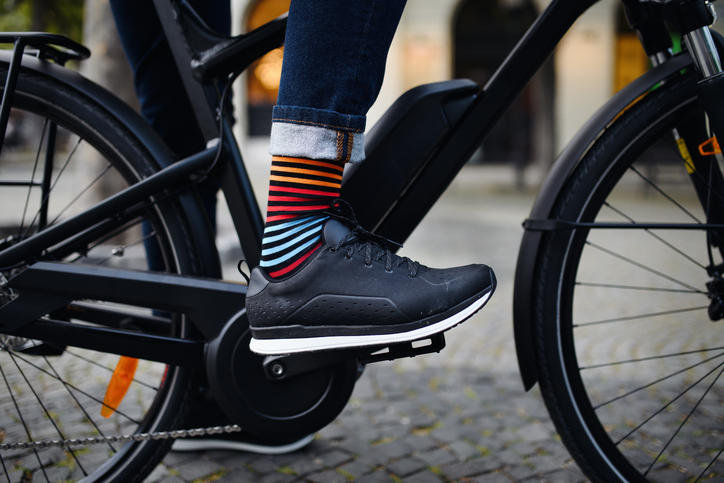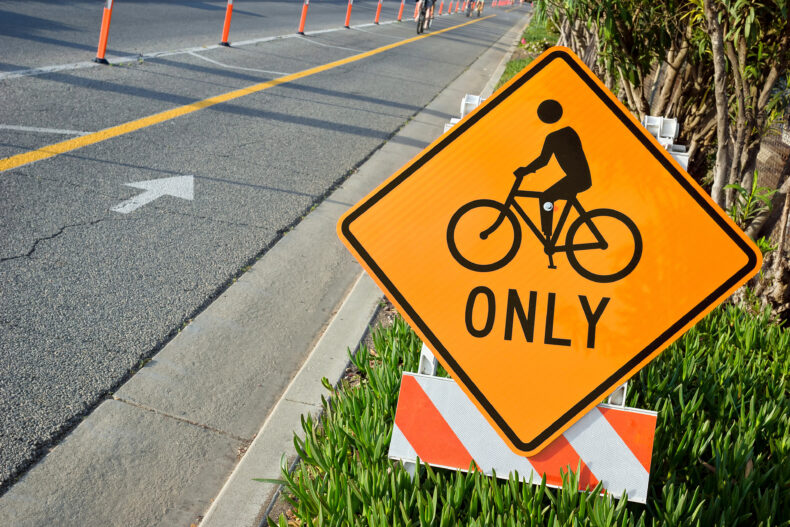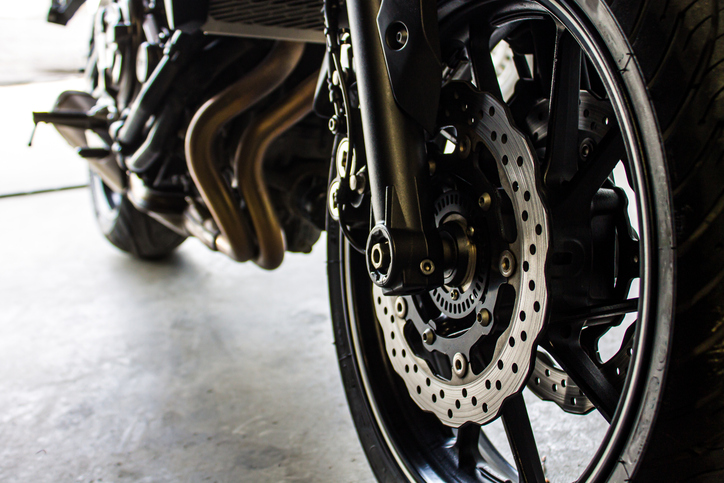A Review of E-Bike Laws for National Bike Month
California EBike Laws
May is National Bike Month, sponsored by The League of American Bicyclists. This month-long holiday is celebrated throughout the US and is meant to encourage biking as another means of transportation and recreation and showcase its other benefits.
Before your next ride through Fresno, it is important to ensure you are up to date on the current bicycle laws, especially regarding the California e-bike laws. This brief guide clarifies the different e-bike rules and regulations, as well as safety tips for a smooth ride.

About Bicycles with an Electric Motor
A bicycle equipped with fully operable pedals and electric motors that can reach a maximum output of 750 watts is considered an e-bike or an electric bicycle. However, these bikes have varying classifications.
Different Classifications of E-Bikes
To ensure safe and consistent use, e-bikes are categorized into three classifications based on their motor operation and speed:
Class 1: Pedal-Assist Only (up to 20 mph) 
- Class 1 e-bikes provide electric motor assistance only when the rider is pedaling. Assistance cuts off automatically once the bicycle reaches 20 mph. These e-bikes are legal on any paved surface where a regular bike can operate.
Class 2: Throttle-Assist (up to 20 mph)
- Class 2 e-bikes offer a throttle function for electric motor propulsion without pedaling. However, like Class 1 e-bikes, the motor disengages once the bicycle reaches 20 mph. These bikes are legal on any paved surface where traditional bikes can operate.
Class 3: Speed Pedal-Assist (up to 28 mph) 
- Class 3 e-bikes are speed pedal-assisted electric bicycles. They are equipped with a speedometer and utilize a pedal-assist motor that functions only when the rider is pedaling, stopping after reaching a speed higher than 28 mph. These bikes are prohibited from Class 1 multi-use bike paths unless specifically authorized by a local ordinance.
Riding Regulations for Electric Bicycles in Fresno, CA
Similar to traditional bicycle laws, California e-bike laws adhere to the following safety regulations: 
- E-bike operators 17 years and younger must wear helmets when operating Class 1 and Class 2 bikes.
- Class 3 electric bikes may only be operated by riders at least 16 years of age or older.
- Passengers are not allowed to be transported on any electric bicycle.
- Operating any e-bike under the influence of alcohol or drugs is strictly prohibited and may result in a cycling under the influence (CUI) charge. This is a misdemeanor offense, which results in a fine of at least $250.
- Class 3 electric bikes may not be operated on a bicycle path, horse trail, hiking trail, or other recreational trail unless permitted by local authorities or ordinances.
- Generally, e-bikes can be used in bike lanes throughout California. Class 3 electric bikes are allowed in the bike lane only if the rider is at least 16 years old and wears a well-fitted helmet.
- Electric bikes may not be used on freeways or in other areas with signs posting that riding is prohibited.
These regulations ensure responsible e-bike use and promote safety for all riders and pedestrians sharing the roadways. However, even with these laws in place, accidents still occur.
If you have been injured in a bicycle accident, an experienced Fresno bicycle accident lawyer from Central Valley Accident Lawyers can help you recover compensation for your injuries and other damages. Schedule a free consultation to learn more.
Free ConsultationHow E-Bikes Differ from Other Two-Wheeled Vehicles
 California law treats electric bicycles like regular bicycles, exempting them from registration, licensing, and vehicle insurance requirements. Here are the other types of two-wheeled vehicles that are commonly and mistakenly associated with electric bicycles.
California law treats electric bicycles like regular bicycles, exempting them from registration, licensing, and vehicle insurance requirements. Here are the other types of two-wheeled vehicles that are commonly and mistakenly associated with electric bicycles.
Motorcycles
A motorcycle is a motorized vehicle equipped with a robust engine whose motor displaces more than 150 cubic centimeters (150cc). It’s designed for speed and acceleration. Conversely, e-bikes feature electric motors that provide varying levels of motorized assistance. Additionally, motorcycles require an M1 license, whereas e-bikes do not.
Motor-Driven Cycles
The most common type of motor-driven cycle is a motorized scooter. These resemble motorcycles but have a smaller engine, typically under 150cc. A two-wheeled motor-driven cycle requires an M1 license, and a three-wheeled motor-driven cycle requires a Class C driver's license.
Moped or Motorized Bicycle 
This is a two or three-wheeled vehicle with the following characteristics:
- Operable pedals: Functional pedals for rider propulsion
- Electric or gas motor: A small electric motor or a gas-powered engine
- Limited power: The motor's output is capped at less than 4 gross brake horsepower
- Automatic transmission: Automatic transmission eliminates the need for shifting gears
- Speed restriction: Not designed to exceed 30 miles per hour on flat terrain
General California Bicycle Laws
The California Vehicle Code (VEH) specifies where and how bicycles may operate. Here are the key sections that bicyclists must keep in mind.
When Riding 
- Helmets (18 and under): Minors 17 years and younger must wear an approved helmet. (VEH 21212)
- Headphones: Earphones or headsets covering both ears that are not hearing aids cannot be worn. (VEH 27400)
- Cell Phones: Use is allowed, but safety must be prioritized. (VEH 23123)
- Impaired Riding: Riding under the influence of alcohol or drugs is prohibited. (VEH 21200.5)
- Hitching Rides: Bicycles may not be attached to other moving vehicles. (VEH 21203)
- Carrying Objects: Carrying items should not prevent riders from using at least one hand on the handlebar. (VEH 21205)
- Yielding to Pedestrians: Give way to pedestrians in crosswalks and intersections, especially those with visual impairments. (VEH 21950 and VEH 21963)
- Proper Parking: Bikes must be parked upright and not block pedestrian walkways. (VEH 21210)
Where Riding Is Permitted 
- Ride with traffic: Generally, ride on the right side of the road, following the flow of traffic (VEH 21650)
- Use bike lanes when appropriate: When available or riding slower than traffic, use bike lanes, except when turning, passing road hazards, or approaching a right turn. (VEH 21208)
- Take the lane: If the lane isn't wide enough to share safely, riders can “take the lane” for their safety. (VEH 21202)
- Separated bikeways: Riders may ride outside separated bikeways (posts, parked cars, or other separation barriers). (SHC 890.4d)
- Sidewalks: Local jurisdictions determine if sidewalks are allowed for cyclists. (VEH 21206)
- Freeways and Expressways: Bicycles are prohibited by the California Department of Transportation and local authorities. (VEH 21960)
- Toll bridges: Use is restricted based on California Department of Transportation (Caltrans) regulations. (VEH 23330)
How All Riders Can Remain Safe During Bike Month
With millions of bicyclists sharing the roads with motor vehicles, it is vital to take some basic precautions to avoid a bike accident, especially this May during National Bike Month. Here are some helpful tips.
1. Always inspect the bike before taking it out on a ride.
- Seat: Adjust and secure to a comfortable height.
- Fasteners: Ensure all parts are tight and functioning properly.
- Tires: Check inflation for proper pressure.
- Reflectors: Confirm the rear, front, pedals, and spokes’ reflectors are secured.
- Extras: Consider adding a horn/bell, mirror, and bright headlight
2. Be as visible to drivers as possible.
- Bright Clothing: Wear neon, fluorescent, or other brightly colored clothing.
- Ride During Daylight: Prioritize riding when it's light out.
- Night Visibility: Wear reflective clothing and use flashing lights at night.
3. Wear a certified helmet, even when it’s not legally required.
- Secure fit: Adjust the helmet until it is comfortably secure.
- Level position: The helmet should sit level, covering the forehead (1-2 finger widths above eyebrows).
- "V" straps: Adjust side straps to form a V-shape under the ears.
- Chin strap: Center the buckle and tighten for a snug fit (1-2 fingers between chin and strap).
- Minimal movement: The helmet should not rock excessively when moving.
4. Follow the local Fresno traffic and biking laws.
- Ride Single File with Traffic: Stay in a straight line in the same direction as cars.
- Stay Alert: Avoid distractions like texting. Always look up, scan surroundings, and watch for hazards, like potholes or opening car doors.
- Signal When Turning and Be Predictable: Use hand signals for turns and be extra careful at intersection crossings.
- No Hitching: Never attach the bike to moving vehicles.
- Look Before Entering Traffic: Stop and look left, right, and left again (checking for blind spots) before proceeding into moving traffic.
Help After a Bicycle Accident

Our experienced team of bicycle accident lawyers can help you understand your legal rights and pursue the compensation you deserve in the event of an accident.
Even if you believe to be partially responsible for the crash, you could still be entitled to compensation for your injuries and medical bills. Schedule a free consultation today to discuss your options.
Central Valley Accident Lawyers prioritizes client well-being and will handle the case complexities, allowing clients to focus on their recovery.
CALL NOW